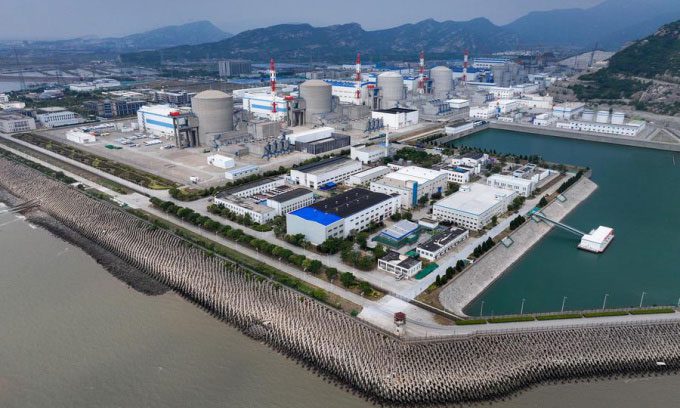China Launches Heqi No. 1 Steam Heating System, Reducing Coal Consumption by 400,000 Tons by Switching from Coal Power to Nuclear Energy.
To shift away from fossil fuels, China is addressing industrial demand with nuclear power instead of coal-fired electricity. The China National Nuclear Corporation (CNNC) has confirmed that the Tianwan Nuclear Power Plant in Jiangsu Province has started supplying steam to the Lianyungang Petrochemical Industrial Facility, as reported by Interesting Engineering on June 21.

Aerial view of Tianwan Nuclear Power Plant in Lianyungang, Jiangsu Province. (Photo: Xinhua/Li Bo).
With the goal of achieving net-zero emissions by 2060, China is employing various solutions and diversifying its clean energy sources. The country has built several of the world’s leading solar power plants while also making significant investments in nuclear power plants. These nuclear facilities aim to meet industrial demands for heat and electricity, replacing coal-fired thermal power that has propelled China’s growth for decades.
In 2022, China launched a nuclear steam supply project at a cost of $108 million. Construction of the project has now been completed, and the plant began operations this week.
The nuclear steam project, named Heqi No. 1, is constructed by CNNC. The project utilizes nuclear energy to convert water into steam in a high-pressure vessel (a machine that boils water from a desalination plant). The steam is then transported approximately 23 kilometers through above-ground pipes to the Lianyungang Petrochemical Industrial Facility. Here, after passing through multiple heat exchange systems, the steam will be used for heating needs.
To enhance safety, the project will continuously monitor the radiation levels of the steam and will shut down immediately if any abnormalities are detected, CNNC stated. When operating at full capacity, the project can supply nearly 5 million tons of steam annually to the industrial facility.
By transitioning from coal to nuclear power, Heqi No. 1 is estimated to reduce coal consumption by 400,000 tons. This transition could help decrease carbon dioxide emissions by over one million tons, along with reducing sulfur dioxide emissions by 184 tons and nitrogen oxide emissions by 263 tons. For the petrochemical sector, the operation of Heqi No. 1 will also allow for the saving of more than 700,000 tons of emissions under carbon quotas, which would otherwise require reforestation over an area of 2,900 hectares.




















































